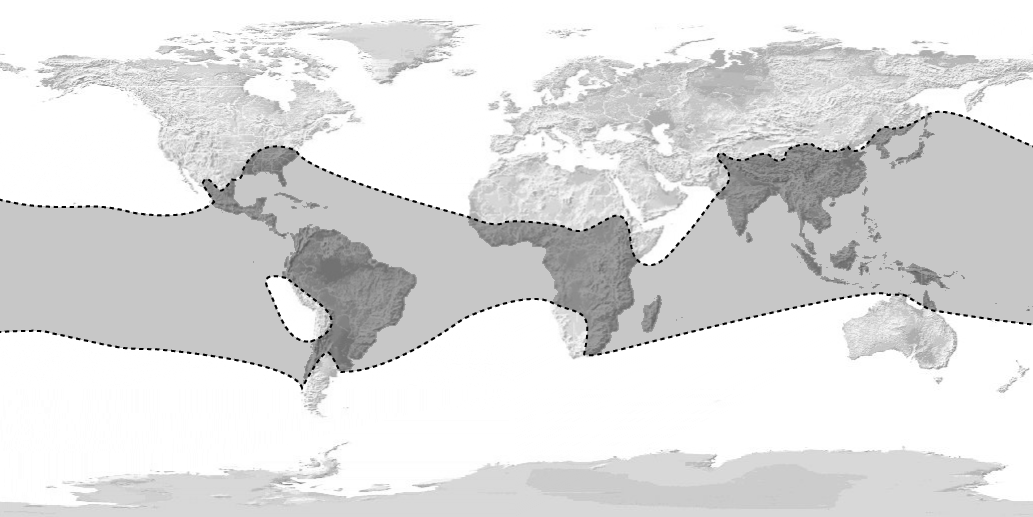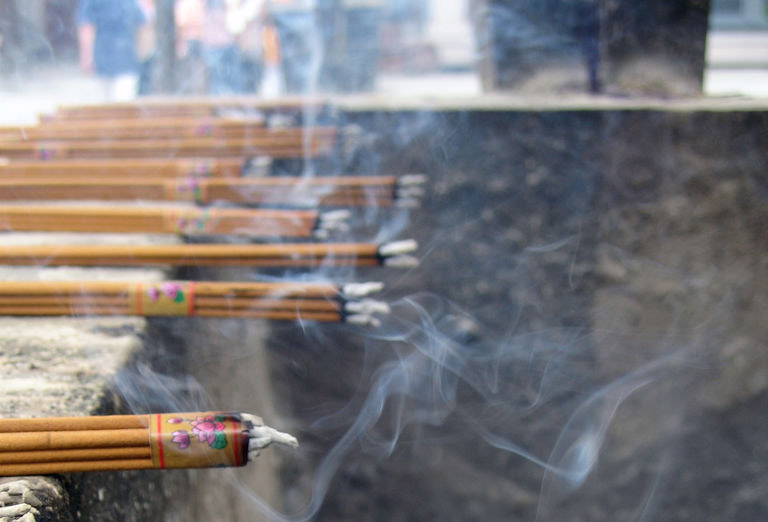|
Punk (fireworks)
A punk is a smoldering stick used for lighting firework fuses. It is safer than a match or a lighter because it can be used from a greater distance and does not use an open flame. They are made of bamboo and a brown coating of compressed sawdust. Punks often resemble sticks of incense, and in some countries actual incense sticks are used in a similar fashion. Punks are sold at nearly all firework stands and many stands will include them for free with a purchase. See also * Black match * Slow match *Pyrotechnics Pyrotechnics is the science and craft of creating such things as fireworks, safety matches, oxygen candles, Pyrotechnic fastener, explosive bolts and other fasteners, parts of automotive airbags, as well as gas-pressure blasting in mining, quarry ... * Tinder References {{Firelighting Fireworks Firelighting ... [...More Info...] [...Related Items...] OR: [Wikipedia] [Google] [Baidu] |
Smoldering
Smouldering (British English) or smoldering (American English; see spelling differences) is the slow, flameless form of combustion, sustained by the heat evolved when oxygen directly attacks the surface of a condensed-phase fuel. Many solid materials can sustain a smouldering reaction, including coal, cellulose, wood, cotton, tobacco, cannabis, peat, plant litter, humus, synthetic foams, charring polymers including polyurethane foam and some types of dust. Common examples of smouldering phenomena are the initiation of residential fires on upholstered furniture by weak heat sources (e.g., a cigarette, a short-circuited wire), and the persistent combustion of biomass behind the flaming front of wildfires. Fundamentals The fundamental difference between smouldering and flaming combustion is that smouldering occurs on the surface of the solid rather than in the gas phase. Smouldering is a surface phenomenon but can propagate to the interior of a porous fuel if it is permeable to f ... [...More Info...] [...Related Items...] OR: [Wikipedia] [Google] [Baidu] |
Firework
Fireworks are a class of low explosive pyrotechnic devices used for aesthetic and entertainment purposes. They are most commonly used in fireworks displays (also called a fireworks show or pyrotechnics), combining a large number of devices in an outdoor setting. Such displays are the focal point of many cultural and religious celebrations. Fireworks take many forms to produce four primary effects: noise, light, smoke, and floating materials (confetti most notably). They may be designed to burn with colored flames and sparks including red, orange, yellow, green, blue, purple and silver. They are generally classified by where they perform, either 'ground' or 'aerial'. Aerial fireworks may have their own propulsion ( skyrocket) or be shot into the air by a mortar ( aerial shell). Most fireworks consist of a paper or pasteboard tube or casing filled with the combustible material, often pyrotechnic stars. A number of these tubes or cases may be combined so as to make when ... [...More Info...] [...Related Items...] OR: [Wikipedia] [Google] [Baidu] |
Match
A match is a tool for starting a fire. Typically, matches are made of small wooden sticks or stiff paper. One end is coated with a material that can be ignited by friction generated by striking the match against a suitable surface. Wooden matches are packaged in matchboxes, and paper matches are partially cut into rows and stapled into matchbooks. The coated end of a match, known as the match "head", consists of a bead of active ingredients and binder (material), binder, often colored for easier inspection. There are two main types of matches: safety matches, which can be struck only against a specially prepared surface, and strike-anywhere matches, for which any suitably frictional surface can be used. Because of the substance used to coat each match, this makes them non-biodegradable. Etymology Historically, the term ''match'' referred to lengths of rope, cord (later cambric) impregnated with chemicals, and allowed to burn continuously. These were used to light fires and fir ... [...More Info...] [...Related Items...] OR: [Wikipedia] [Google] [Baidu] |
Lighter
A lighter is a portable device which creates a flame, and can be used to ignite a variety of items, such as cigarettes, gas lighter, fireworks, candles or campfires. It consists of a metal or plastic container filled with a flammable liquid or compressed gas, a means of ignition to produce the flame, and some provision for extinguishing the flame. Alternatively, a lighter can be powered by electricity, using an electric arc or heating element to ignite the target. History The first lighters were converted flintlock pistols that used gunpowder. In 1662 the Turkish traveller Evliya Çelebi visited Vienna as a member of an Ottoman diplomatic mission and admired the lighters being manufactured there: “Enclosed in a kind of tiny box are tinder, a steel, sulphur and resinous wood. When struck just like a firearm wheel the wood bursts into flame. This is useful for soldiers on campaign.” One of the first lighters was invented by a German chemist named Johann Wolfgang Döbereine ... [...More Info...] [...Related Items...] OR: [Wikipedia] [Google] [Baidu] |
Bamboo
Bamboos are a diverse group of evergreen perennial flowering plants making up the subfamily Bambusoideae of the grass family Poaceae. Giant bamboos are the largest members of the grass family. The origin of the word "bamboo" is uncertain, but it probably comes from the Dutch or Portuguese language, which originally borrowed it from Malay or Kannada. In bamboo, as in other grasses, the internodal regions of the stem are usually hollow and the vascular bundles in the cross-section are scattered throughout the stem instead of in a cylindrical arrangement. The dicotyledonous woody xylem is also absent. The absence of secondary growth wood causes the stems of monocots, including the palms and large bamboos, to be columnar rather than tapering. Bamboos include some of the fastest-growing plants in the world, due to a unique rhizome-dependent system. Certain species of bamboo can grow within a 24-hour period, at a rate of almost an hour (equivalent to 1 mm every ... [...More Info...] [...Related Items...] OR: [Wikipedia] [Google] [Baidu] |
Sawdust
Sawdust (or wood dust) is a by-product or waste product of woodworking operations such as sawing, sanding, milling, planing, and routing. It is composed of small chippings of wood. These operations can be performed by woodworking machinery, portable power tools or by use of hand tools. Wood dust is also the byproduct of certain animals, birds and insects which live in wood, such as the woodpecker and carpenter ant. In some manufacturing industries it can be a significant fire hazard and source of occupational dust exposure. Sawdust, as particulates, is the main component of particleboard. Research on health hazards comes from the field of occupational safety and health, and study of ventilation happens in indoor air quality engineering. Formation Two waste products, dust and chips, form at the working surface during woodworking operations such as sawing, milling and sanding. These operations both shatter lignified wood cells and break out whole cells and groups of ... [...More Info...] [...Related Items...] OR: [Wikipedia] [Google] [Baidu] |
Incense
Incense is aromatic biotic material that releases fragrant smoke when burnt. The term is used for either the material or the aroma. Incense is used for aesthetic reasons, religious worship, aromatherapy, meditation, and ceremony. It may also be used as a simple deodorant or insect repellent. Incense is composed of aromatic plant materials, often combined with essential oils. The forms taken by incense differ with the underlying culture, and have changed with advances in technology and increasing number of uses. Incense can generally be separated into two main types: "indirect-burning" and "direct-burning". Indirect-burning incense (or "non-combustible incense") is not capable of burning on its own, and requires a separate heat source. Direct-burning incense (or "combustible incense") is lit directly by a flame and then fanned or blown out, leaving a glowing ember that smoulders and releases a smoky fragrance. Direct-burning incense is either a paste formed around a bamboo ... [...More Info...] [...Related Items...] OR: [Wikipedia] [Google] [Baidu] |
Black Match
In pyrotechnics, black match is a type of crude fuse (explosives), fuse, constructed of cotton string fibers intimately coated with a dried black powder slurry. When black match is wikt:confinement, confined in a paper tube, called quick match or piped match, the flame front propagates much more quickly, many feet per second. Quick match is often used in model rockets in the United Kingdom to ignite multiple engines/motors; it is however largely unavailable in the USA due to ambiguous explosives laws. See also * Fuse (explosives) * Slow match * Punk (fireworks) Pyrotechnic initiators Pyrotechnics {{Pyrotechnics-stub ... [...More Info...] [...Related Items...] OR: [Wikipedia] [Google] [Baidu] |
Slow Match
Slow match, also called match cord, is the slow-burning cord or twine fuse used by early gunpowder musketeers, artillerymen, and soldiers to ignite matchlock muskets, cannons, shells, and petards. Slow matches were most suitable for use around black-powder weapons because a slow match could be roughly handled without going out, and only presented a small glowing tip instead of a large flame that risked igniting nearby gunpowder. Slow match of various types was one of the first kinds of artillery fuse. Slow matches were also used in the drilling and blasting of rock to ignite charges of gunpowder. Design and use The slow match attached to the lock of the matchlock gun was usually a length of hemp or flax cord that had been chemically treated to make it burn slowly and consistently for an extended period. In Japan, however, match cord was made from braiding together strands of bark from the Japanese cypress. The rate of burning was approximately 1 ft (305mm) per hour. ... [...More Info...] [...Related Items...] OR: [Wikipedia] [Google] [Baidu] |
Pyrotechnics
Pyrotechnics is the science and craft of creating such things as fireworks, safety matches, oxygen candles, Pyrotechnic fastener, explosive bolts and other fasteners, parts of automotive airbags, as well as gas-pressure blasting in mining, quarrying, and demolition. This trade relies upon self-contained and self-sustained exothermic chemical reactions to make heat, light, gas, smoke and/or sound. The name etymology, comes from the Greek words ''pyr'' ("fire") and ''tekhnikos'' ("made by art"). People responsible for the safe storage, handling, and functioning of pyrotechnic devices are known as pyrotechnicians. Proximate pyrotechnics Explosions, flashes, smoke, flames, fireworks and other pyrotechnic-driven effects used in the entertainment industry are referred to as proximate pyrotechnics. Proximate refers to the pyrotechnic device's location relative to an audience. In the majority of jurisdictions, special training and licensing must be obtained from local authorities to lega ... [...More Info...] [...Related Items...] OR: [Wikipedia] [Google] [Baidu] |
Tinder
Tinder is easily combustible material used to start a fire. Tinder is a finely divided, open material which will begin to glow under a shower of sparks. Air is gently wafted over the glowing tinder until it bursts into flame. The flaming tinder is used to ignite kindling, which in turn is used to ignite the bulk material, to produce a fire. Tinder can be made of any flammable substance, as long as it is finely divided and has an open structure. Technique Any flammable material may be used as long as it is finely divided. As the tinder gets thinner, the surface area and edges increase, making it ignite more easily. Wood tinder can be made by carefully shaving thin slivers off a larger piece. Another method which keeps these slivers together, is to make a feather stick. The driest wood, which makes the best tinder, is that of dead branches that have not yet fallen to the ground. If a fire is to be lit by sparks rather than matches, char cloth, punkwood, fungus or down are c ... [...More Info...] [...Related Items...] OR: [Wikipedia] [Google] [Baidu] |




.jpg)



